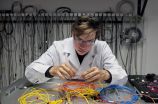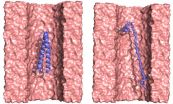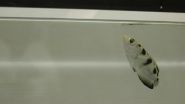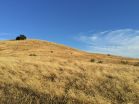Home-based treatment is cost-effective alternative for heart patients
Post-discharge disease management provided in their own homes could be a cost-effective alternative for recently-hospitalized elderly patients with chronic heart failure
2015-08-20
(Press-News.org) Post-discharge disease management provided in their own homes could be a cost-effective alternative for recently-hospitalised elderly patients with chronic heart failure (CHF).
Just published in the International Journal of Cardiology, this is the finding of a recent economic evaluation conducted by Griffith University using data from a randomised controlled trial (The WHICH Study).
In collaboration with the Australian Catholic University, 280 patients with CHF recruited from three public hospitals, received multidisciplinary disease management.
With the aim of reducing mortality and readmissions to hospital, the study compared home-based intervention (HBI) predominantly applied in the home, delivered by specialist nurses and community-based health professionals (e.g. family physician, community pharmacist), versus the clinic-based intervention (CBI), delivered by a specialist CHF clinic based in the hospital.
Intervention was provided for up to 1.5 years with median follow-up of 3.2 years. The groups were compared in terms of total healthcare costs and quality-adjusted life-years (years of life adjusted for their quality).
"A range of methodologies we used have converged on a common conclusion: HBI is likely to be cost-effective if decision makers are willing to pay up to $50,000 per quality-adjusted life year. The net benefit of HBI appeared to be pronounced among the patients with a low level of self-care confidence or with fewer co-existing diseases," says lead study author Dr Shoko Maru from the Menzies Health Institute Queensland.
"The longer we live, the more healthcare we consume. Those in the HBI group lived longer, but when re-hospitalised, their hospital stay was shorter, which significantly reduced healthcare costs, an important implication from a public health perspective."
"If improved care reduces mortality while increasing the cost of survival, the cost-effectiveness of such care should be assessed over the long-term as it takes time to see the impact on mortality while the costs are upfront. Yet the duration of most studies is 9 to 12 months. What happens thereafter is largely unknown even though this factor can influence cost-effectiveness," says Dr Maru.
"Our findings inform the long-term cost-effectiveness of intervention intended for a lifelong disease such as CHF."
INFORMATION:
ELSE PRESS RELEASES FROM THIS DATE:
2015-08-20
The solid waste left over from wine-making could make a competitive biofuel, University of Adelaide researchers have found.
Published in the journal Bioresource Technology, the researchers showed that up to 400 litres of bioethanol could be produced by fermentation of a tonne of grape marc (the leftover skins, stalks and seeds from wine-making).
Global wine production leaves an estimated 13 million tonnes of grape marc waste each year. Nationally it is estimated that several hundred thousand tonnes are generated annually and it is generally disposed of at a cost to ...
2015-08-20
The problem has been that the vast majority of these atomically thin 2D crystals are unstable in air, so react and decompose before their properties can be determined and their potential applications investigated.
Writing in Nano Letters, the University of Manchester team demonstrate how tailored fabrication methods can make these previously inaccessible materials useful.
By protecting the new reactive crystals with more stable 2D materials, such as graphene, via computer control in a specially designed inert gas chamber environments, these materials can be successfully ...
2015-08-20
In the Arctic, warming increases like a spiral. Global warming means that the periods of growth are becoming longer and vegetation growth is increasing. At the same time, heat transfer to the Arctic from lower latitudes is rising, reducing sea ice there, and this in turn is contributing towards a faster local rise in temperature.
A new research study published in the highly respected research journal PNAS shows that the situation is the reverse on the Tibetan Plateau.
Vegetation on the Tibetan Plateau has also increased as a result of global warming. However, in contrast ...
2015-08-20
A team at the University of Warsaw, Faculty of Physics has created a laser capable of generating ultrashort pulses of light even under extremely difficult external conditions. This unique combination of precision and resilience is due to the fact that the whole process of generating femtosecond laser pulses takes place within a specially-selected optical fiber.
Its appearance seems quite inconspicuous: just a flat, rectangular box, tens of centimeters across and about the same height, with a thin, shiny-tipped "thread" leading out of it, so long that it is rolled up ...
2015-08-20
University of Pennsylvania researchers have made strides toward a new method of gene sequencing a strand of DNA's bases are read as they are threaded through a nanoscopic hole.
In a new study, they have shown that this technique can also be applied to proteins as way to learn more about their structure.
Existing methods for this kind of analysis are labor intensive, typically entailing the collection of large quantities of the protein. They also often require modifying the protein, limiting these methods' usefulness for understanding the protein's behavior in its natural ...
2015-08-20
Move over, Katniss Everdeen. For archerfish, the odds are ever in their favor, according to new research from Wake Forest University.
The sharp-shooting fish's ability to spit water to hit food targets has been well documented, but a new study published online in the journal Zoology showed for the first time that there is little difference in the amount of force of their water jets based on target distance. And, when given the choice, the fish preferred closer targets.
The study was co-authored by Wake Forest researchers Morgan Burnette, a biology graduate student, ...
2015-08-20
A new study says that global warming has measurably worsened the ongoing California drought. While scientists largely agree that natural weather variations have caused a lack of rain, an emerging consensus says that rising temperatures may be making things worse by driving moisture from plants and soil into the air. The new study is the first to estimate how much worse: as much as a quarter. The findings suggest that within a few decades, continually increasing temperatures and resulting moisture losses will push California into even more persistent aridity. The study appears ...
2015-08-20
COLUMBUS, Ohio - Formula One racing teams may have a lesson to teach business leaders: Innovation can be overrated.
That's the conclusion from academic researchers who pored over data from 49 teams over the course of 30 years of Formula One racing. They found that the teams that innovated the most - especially those that made the most radical changes in their cars - weren't usually the most successful on the race course.
Moreover, radical innovations were the least successful at exactly the times when many business leaders would be most likely to try them: when there ...
2015-08-20
A research team at York has adapted the astonishing capacity of animals such as newts to regenerate lost tissues and organs caused when they have a limb severed.
The research, which is funded by a £190,158 award from the medical research charity Arthritis Research UK, is published in Nature Scientific Reports.
The scientists, led by Dr Paul Genever in the Arthritis Research UK Tissue Engineering Centre in the University's Department of Biology, have developed a technique to rejuvenate cells from older people with osteoarthritis to repair worn or damaged cartilage ...
2015-08-20
Physicists suggest a new way to look for dark matter: They beleive that dark matter particles annihilate into so-called dark radiation when they collide. If true, then we should be able to detect the signals from this radiation.
The majority of the mass in the Universe remains unknown. Despite knowing very little about this dark matter, its overall abundance is precisely measured. In other words: Physicists know it is out there, but they have not yet detected it.
It is definitely worth looking for, argues Ian Shoemaker, former postdoctoral researcher at Centre ...
LAST 30 PRESS RELEASES:
[Press-News.org] Home-based treatment is cost-effective alternative for heart patients
Post-discharge disease management provided in their own homes could be a cost-effective alternative for recently-hospitalized elderly patients with chronic heart failure



